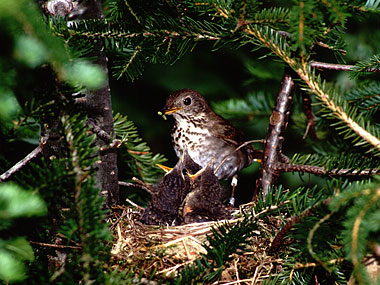Be Informed
Sign up for Sépaq emails to be the first to find out about our promotions, news and special offers.
Having extensive knowledge of the parks to better preserve them is the foundation that justifies the efforts invested in inventories, monitoring programs and scientific research. At Parc national des Hautes-Gorges-de-la-Rivière-Malbaie, the Golden Eagle raises a great deal of interest. Following concerted efforts by Pierre Fradette, a biologist from Regroupement Québec Oiseaux, the Department of Natural Resources and the park team, we can confirm that the Golden Eagle is alive and well in the park and nests on the high cliffs along Rivière Malbaie. In the future, we will work to see if the Golden Eagle is still in the park and whether or not it breeds.
The park team is also monitoring the process of bank erosion that could be caused by the riverboat’s repeated passage on Rivière Malbaie. We are trying to measure the amount of erosion and compare it to the impact of heavy seasonal rains, which also affect the condition of the riverbanks.
Find out more about scientific research in the Québec's National Parks network
Bicknell’s Thrush is designated as vulnerable. It nests in altitude, where the trees are stunted and grow tightly together. Its presence has been confirmed at the top of Acropole-des-Draveurs.

Bicknell’s Thrush.
Photo credit: Yves Aubry, Canadian Wildlife Federation
The presence of this species once again confirms the importance of the park’s mission to preserve this area’s diverse habitats. The bird is monitored from listening stations on Acropole-des-Draveurs trail. Open your eyes and ears on your next hike to the top of the mountain. You too might have the chance to make an extraordinary observation!
Sign up for Sépaq emails to be the first to find out about our promotions, news and special offers.